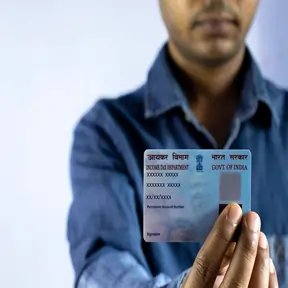Citizen Services
Driving Lessons
Campus (Coming Soon!)

What is a PAN card?
PAN stands for Permanent Account Number. It is a 10-digit alphanumeric number assigned to all tax-paying entities mostly in India. A PAN number is one-of-a-kind and is used to identify various types of taxpayers. PAN was launched in 1972
PAN Card is issued by the Income Tax Department, Government of India with help from authorized district-level PAN agencies, UTIITSL (UTI Infrastructure Technology and Services Limited), and Protean eGov Technologies Limited (formerly known as National Securities Depository Limited or NSDL). PAN card is also available in electronic form and is known as e-PAN. A PAN card is valid for a lifetime and the number remains unchanged by a change in address or any other detail.
How is a PAN card issued?
PAN cards are issued following the PPP (Public Private Partnership) model. This is done to maintain the economy, efficiency, and effectiveness of managing, processing, and issuing PAN applications to everyone.
The PAN system of identification is a computer-based system that assigns a unique identification number to every tax-paying entity. Through this method, all tax-related information for an individual is recorded against a single PAN number. Thus, no two people can have the same PAN number. This is shared across the country and saved in the PAN database as well for future reference.
What does the alphanumeric sequence in a PAN Card mean?
A Permanent Account Number, or PAN, is not a combination of random numbers and alphabets. The structure of PAN is quite noteworthy. Each character of PAN is analyzed below:
First 3 Characters: These characters in PAN are in an alphabetic sequence from AAA to ZZZ. The sequence can be any combination of English alphabets.
4th Character: This character in a PAN stands for the type of taxpayer that the PAN holder is. The categories of taxpayers and their respective alphabets are as follows:
A – Association of Persons
B – Body of Individuals
C – Company
F – Firms
G – Government
H – Hindu Undivided Family
L – Local Authority
J – Artificial Judicial Person
P – Individual
T – Trust’s Association of Persons
5th Character: This character is the first letter of the PAN card holder’s surname. For Example, if a person’s name is “Rita Banerjee”, the 5th character in her PAN would be “B”.
6th – 9th Characters: These characters in PAN are a number sequence in-between 0001 to 9999.
10th Character: A random English alphabet
Types of PAN cards
There are different types of PAN based on the type of tax-paying entity. All those entities are as follows:
PAN Card for Indian Citizens: Such PAN cards have the PAN card holder’s name, photo, digital signature, Date of Birth, Father’s Name, an authenticity hologram, QR code, date of issue of the PAN card as well as the Permanent Account Number.
PAN Card for Indian Companies: Such PAN cards have the name and date of registration of the Company, QR code, the authenticity hologram, and date of issue of PAN as well as the Permanent Account Number.
PAN for Foreign Citizens
PAN for Foreign Companies
Structure of PAN card
The Income Tax Department (ITD) has introduced a new format for PAN Cards issued after 1 January 2017. The features of the new format of the PAN card are as follows:
Who is eligible for a PAN card?
According to Section 139A of the Income Tax Act, the following taxpaying entities are required to have a Permanent Account Number:
Benefits/Advantages of PAN card
Let me highlight the benefits and advantages of owing a PAN card: -